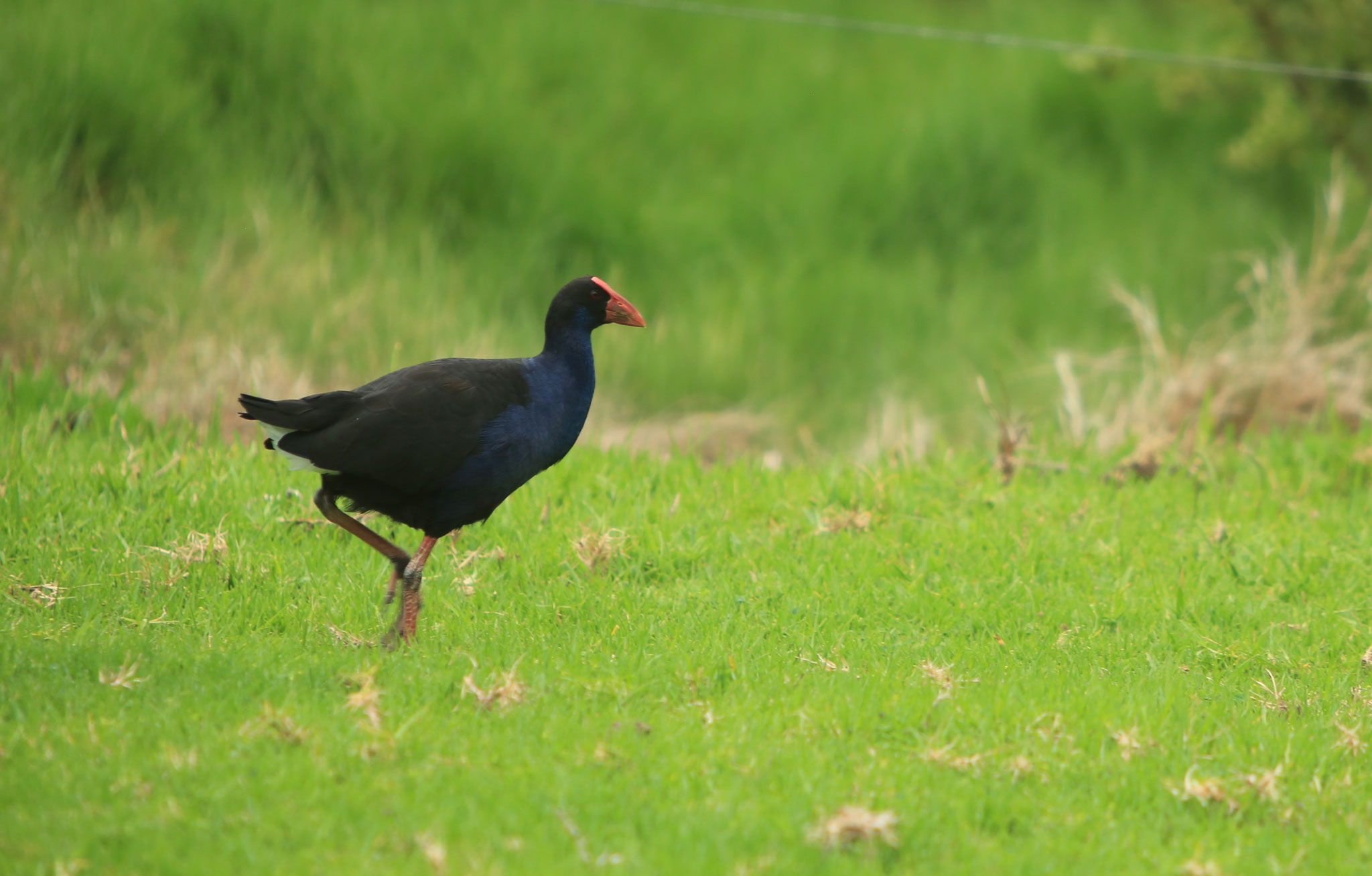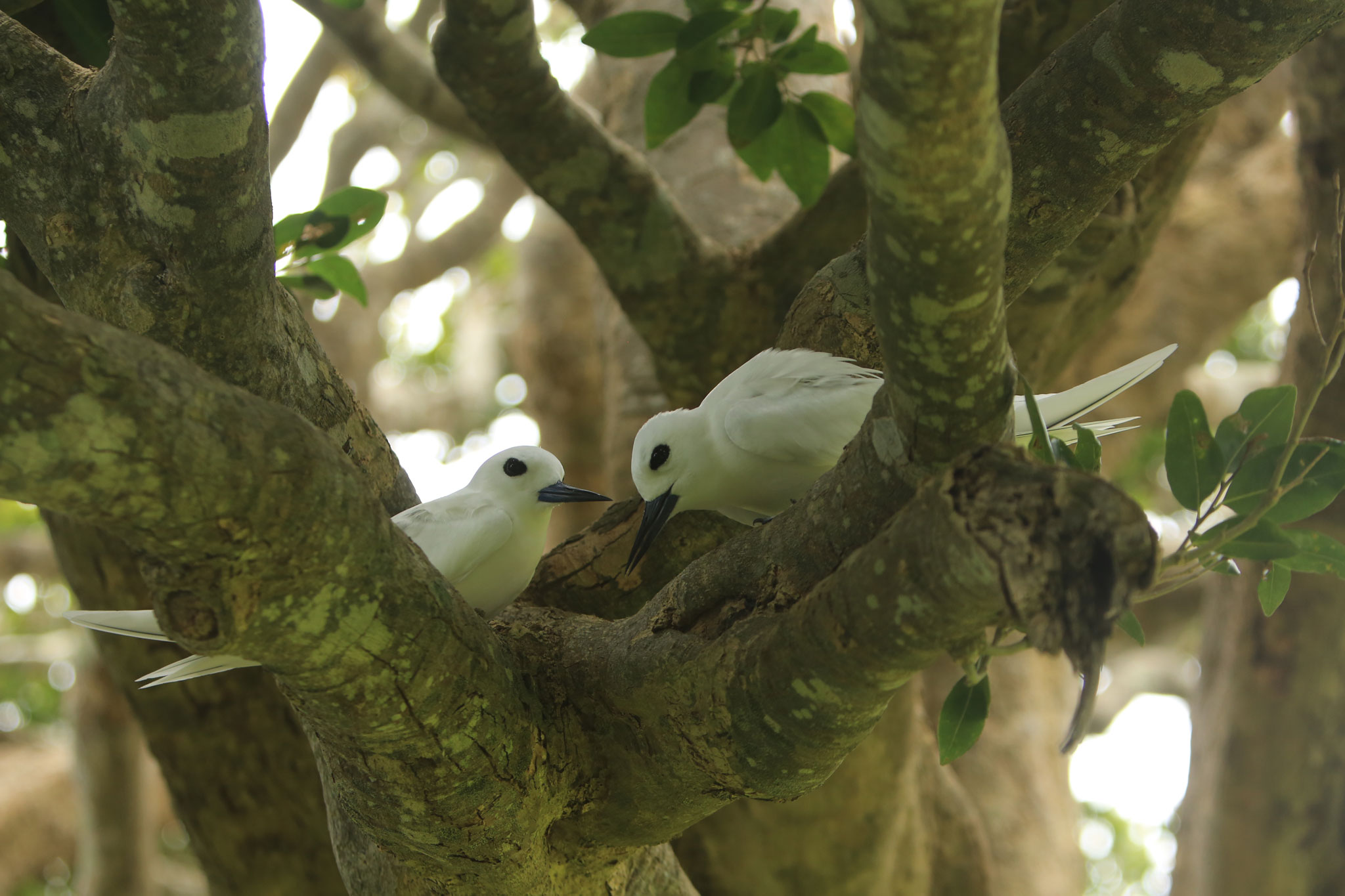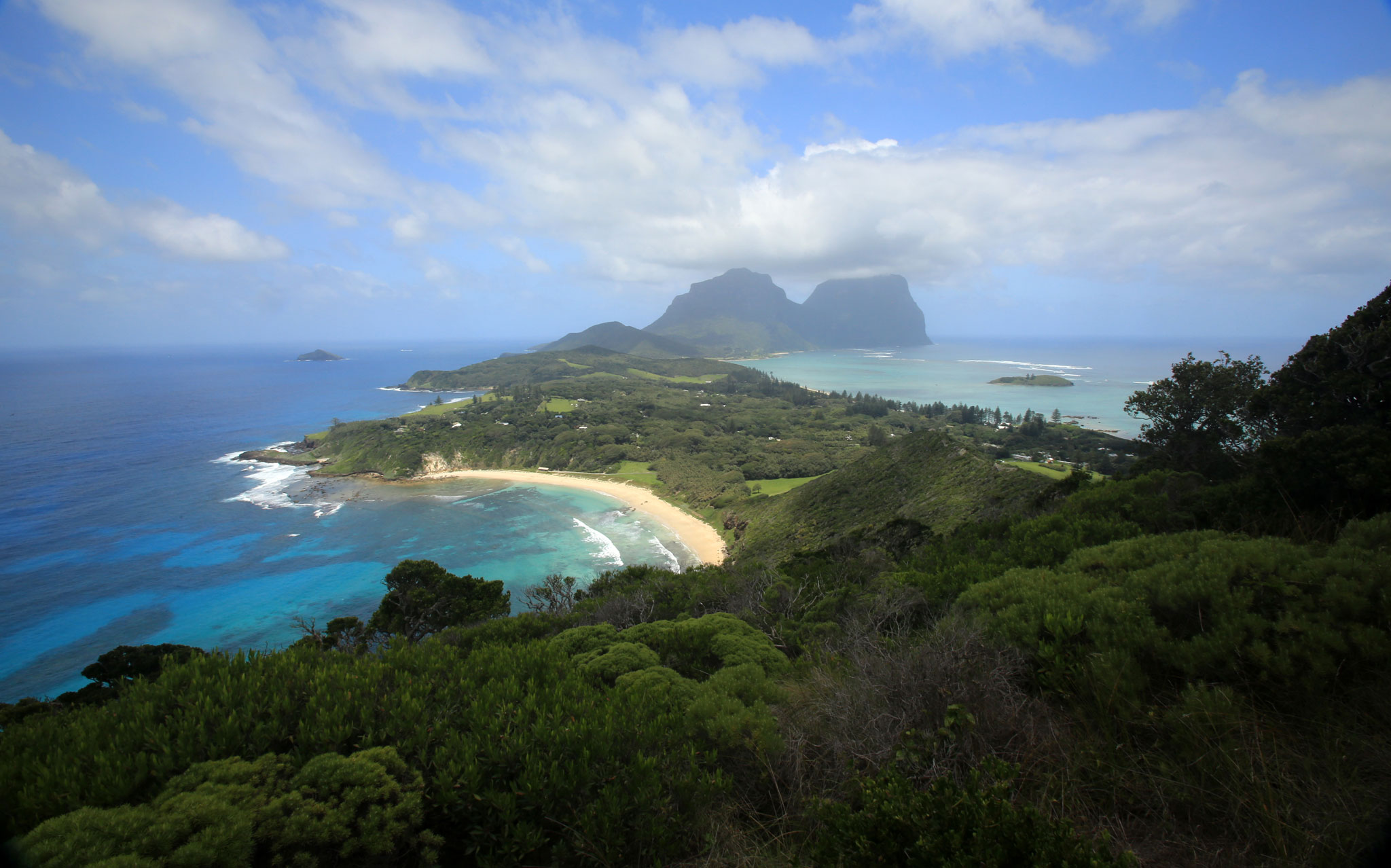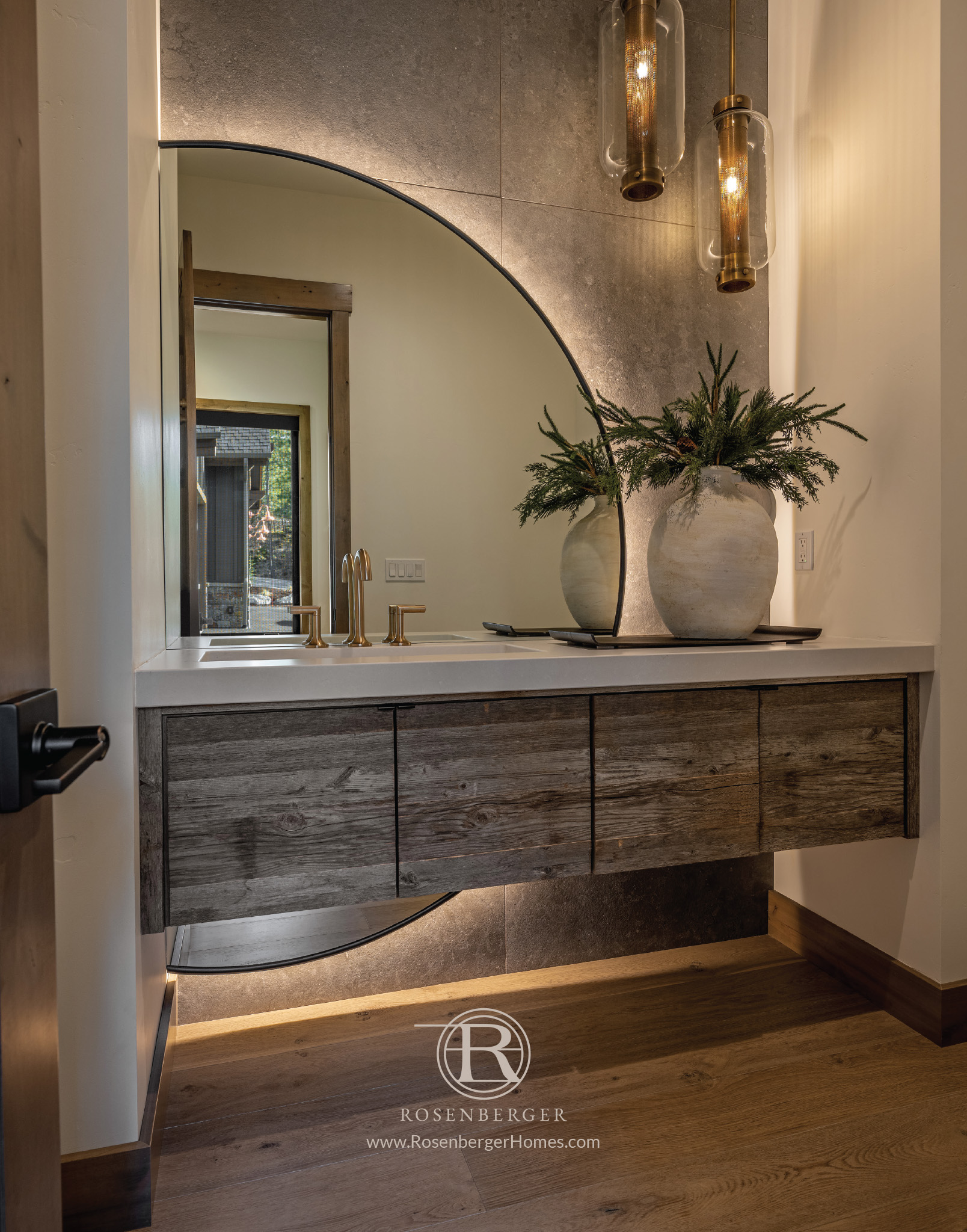I once watched a program about Lord Howe Island in Australia; its white sand beaches, fabulous day hikes and snorkeling the world’s southern-most coral reef in the earth’s cleanest and clearest ocean. It has world-class bird watching and fishing and an impressive collection of endemic plant species. There is no crime on the island, the transportation mode of choice is the bicycle and the official school uniform is barefoot. The weather, like everything else here, is idyllic. It is known to be one of the cleanest places on Earth, with no air or sea pollution and no litter. There are no snakes, stingers or sand flies, and with the limited number of vehicles and 25 mph speed limit, children are safe to roam.
Twenty years after watching that program, we stepped off the plane and into paradise. We were greeted by Julie, the owner of Ebbtide Apartments, where we had booked a cottage for the week. She helped us get our bearings on the island and swung us by a store to pick up incidentals before getting settled in. Then, Julie gave us a tour of what she called the ‘CBD,’ Lord Howe’s central business district, which consisted of a fishmonger, co-op health food store, post office/gift shop, small general store and a restaurant and pub. Because visitors are discouraged from hiring car service, we rented cruiser bikes with baskets to get around the 7-by-1.7 mile island.

We checked into our cottage and Julie advised us there are no locks for the doors. They weren’t necessary as there is no crime on the island. She showed us the guest lounge that had games, books and an honesty box that was filled with beer, frozen fi sh and other goodies.
“Help yourself and write down what you take in the notebook,” she said. “We’ll settle up when you check out.”
Our cabana had a covered deck and opened up to a lush garden of papaya (pawpaw), blooming hibiscus and banana plants. A trail led from the gardens through a banyan tree forest to Ned’s Beach below. Anxious to experience some of the island’s top-rated trails, we dumped our bags and set off to hike to the summit of Malabar peak before the sunset. We had been warned not to be out after dark on the trails. The island has zero light pollution so it getsdark. We wandered along Settlement Beach and through the cow pastures before climbing one of the staircases that ascends to Kim’s Lookout at 597 feet. From the lookout we gazed over the pristine reef and beyond to the island’s highest peaks: Mount Lidgebird and Mount Gower. Mount Gower can only be hiked with a guide. We’d booked that tour for later in the week. It began to rain as we continued the hike to the summit of Malabar at 685 feet. Despite the clouds, we could still make out Soldier’s Cap and the Admiralty Islands below. We were enthralled with Roach Island’s natural arch and imagined kayaking beneath it through the aqua blue water. Then, remembering Julie’s warning, we began scurrying down the slick path before dark settled in.
Back at the cabana, we donned headlights and wandered down the road about a half of a mile to a local restaurant. Our accommodations were located on the appropriately named Muttonbird Lane. On our walk to the restaurant, we were taken aback by the unfamiliar wails and screeching calls from the Muttonbirds lining the street and woods. By day, these birds soar beautifully near the cliffs by the seashore as they are feeding. In the evenings, however, they come inland to mate in holes they dig in the earth. These kooky birds do not walk well. Under the dark sky their black feathers are camouflaged leaving just the sight of their yellow eyes and the sound of them waddling clumsily to get out from underfoot. We had a good laugh over our reaction to the unexpected drones of the Muttonbirds lining Muttonbird Lane. After dinner, the owner of the restaurant offered us a lift home in his car, which is apparently typical here.

From the lookout we gazed over the pristine reef and beyond to the island’s highest peaks.
The next few days were filled with snorkeling the reef. We explored Erscott’s Hole with Staghorn coral, double-header wrasse, spangled emperor and more. At Erscott’s Reef, we discovered dense and diverse coral patches including bright blue and purple coral. In Comet’s Hole, a deep coral hole, we swam with subtropical fish, black stingrays, a shark and a clownfish. The Horseshoe was a shallow reef dominated by neon colored corals and mesmerizing butterfly fish. Each place we snorkeled was diverse and stunningly beautiful, full of surprises and wonder. After each day in the water, we enjoyed the culinary pleasures of the island with fresh lunches such as smoked salmon sandwiches with beetroot and other seafood delicacies.
We quickly learned the system of placing an order with the town fishmonger by midday, so when we returned from our adventures we’d find freshly caught to-order fish in our refrigerator. Since there are no locks on the doors, we’d simply place our order in town, tell the fishmonger where we were staying, and leave some cash in the fridge. The fishermen would catch what we’d requested, deliver to our cabana and leave the correct change. We prepared barbequed Kingfish, fresh pasta with olives and sundried tomatoes from the co-op and squid sautéed with chili peppers.
Story continues after a quick message from our sponsor below.
On New Years Eve we dined with a couple from Melbourne whom we’d met while snorkeling. We shared a grilled Kingfish sandwich and fries and ordered Mojitos to celebrate. While Sydney was preparing to launch a pyrotechnic extravaganza over the harbor, the youth of Lord Howe Island had their own tradition for ringing in the new year. Near the jetty in town, the islanders fashioned a grass hut of sorts out of pallets and straw, complete with surf boards protruding from the top and Happy New Year spray-painted onto plywood. At the stroke of midnight, the hut was torched and a beachside bonfire party ensued. It was a raucous New Year’s bash. Under the light of the moon and stars, with the silhouette of Mount Gower and Mount Lidgebird in the backdrop, we would be among the first in the world to be greeted by the sunrise of the new year.

When the day finally came for us to hike Mount Gower, we were led by a man who was a conservationist, life-long resident, council member and had a wealth of knowledge. He taught our group about endemic plant and bird species, and island conservation policies. We learned that the island has recorded 241 species of indigenous plants of which 113, or 47 percent, are found nowhere else in the world. There are more seabird species breeding on LHI than anywhere in Australia; that’s 32 of the 207 different bird species on the island. Sixty percent of the more than 1,600 terrestrial insects are endemic to the island. The diverse hiking group soaked up the knowledge and enjoyed the fast pace our leader maintained. The trail offered a series of ropes to keep hikers from falling off the steep cliffs and to guide them through the misty forest on the upper slopes of the mountain.
At the summit, we happened upon several Lord Howe Island wood hens. These flightless birds are an endemic species saved from extinction by a local conservation effort. The views over the island were breathtaking and encompassed adjacent Mount Lidgebird, the sparkling blue waters of the reef, and the entire island Summer below us. A short way down from the summit, we saw Balls Pyramid to the southeast, a peculiar pinnacle shaped rock mound jutting 1,800 feet above the sea from the ocean floor. Located about 14 miles offshore, Balls Pyramid is the world’s tallest sea stack and the site of some of Australia’s most remarkable diving. Balls Pyramid is also home to some rare species including the Phasmid, a large stick insect that was thought to be extinct until recently rediscovered there. The Mount Gower hike was well worth the effort, and a cold brew at The Anchorage was deemed to be a fitting reward for the grueling day.
We spent the next day tasting the island’s delicacies and intermittently swimming, biking and contemplating how we would spend our last morning on this glorious island. There are many walking treks on the island and expansive beaches where solitude, sand and shorebirds are the only company you will find. We picked a few beautiful walks and tried not to lament over the trails that we didn’t find time to experience. We didn’t kid ourselves into thinking we’d return to complete the list. It was no easy feat to get here. N
We are grateful to have visited paradise on earth, and know that no matter how much we travel we will never find another place quite like Lord Howe Island, where the only rule is the Golden Rule, and the local economy runs on it.
By Denise Lundy
Photography By David Ronalds
As Featured In: Summer/Fall 2016



